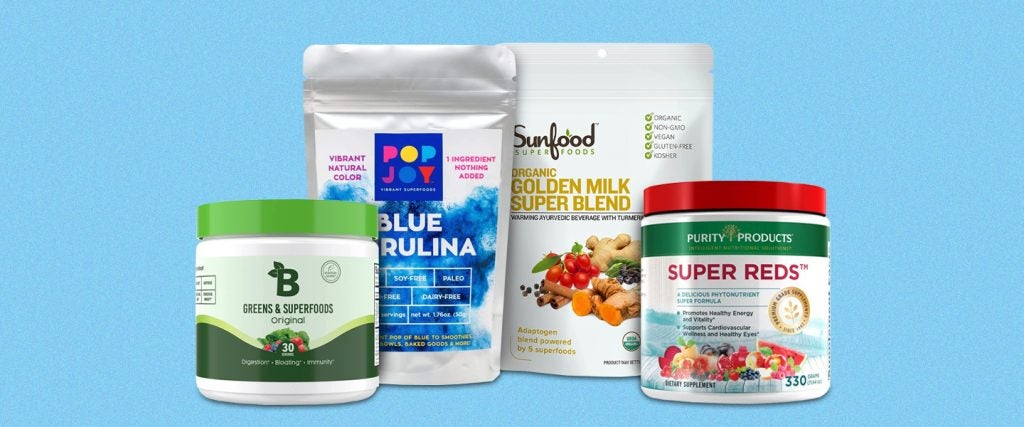If you’re being honest with yourself, there are only a few potential reasons why you might be seeking out a fruit or vegetable supplement. The best-case scenario is that you’re already including a healthy abundance of fruits and vegetables in your diet, and you’re just looking to stretch the limits of your plant-induced physical output. However, it’s more likely than not that you’re looking for them to either minimize your caloric intake from fruit sugars while maximizing the advantages your body can reap from plant-based nutrition, or you’re just hoping you can receive all of your vegetable nutrition in a powdery or encapsulated form without having to consume an actual fruit or a vegetable.
Should you fall into the latter category, I completely understand that there’s more to fruits and vegetables than their mere consumption. There’s also the selection, the storage and the concerns that you’ll have to toss away your food because it spoiled before you had an opportunity to eat it. At the same time, there’s always room in the freezer for a frozen vegetable blend that will steam up in the microwave in seconds if you’re really that worried about food spoilage.
Stop lecturing me, dude! Just tell me which fruit and vegetable supplements are the best!
Well, we can begin with what seems to be the most prevalent of the supplements — the green superfood blend. There are literally dozens of green superfood offerings available at supermarkets and nutrition shops. The most common vegetables contained within them are spinach and broccoli, and they’re frequently accompanied by chlorella, which is a seaweed; spirulina, which is a blue-green algae; and wheatgrass, which is common wheat in its early stages of sprouting. Collectively, these three non-vegetable, less-commonly-consumed greens ostensibly provide several vitamin and mineral benefits, including vitamin B, vitamin C, vitamin K, copper and iron, thereby rendering the nutritive punch of the blend more robust.
Depending on the specific green blend, there may be a vast number of additional supplements added, including anything from carrots and rose hips to pineapple, maca root, beetroot and acai berry.
From there, we can jump to the next most common set of superfood blends — the red collection. These blends tend to be more fruit-infused than the green offerings, containing the essences of countless berries — ranging from strawberries and cranberries to blueberries and blackberries — along with other colorful fruits like peaches, pears, apples, mangos, plums and nectarines. There are also blue superfoods, which are usually just a combination of blue spirulina and blue-green algae, and gold superfoods, which combine the essences of powdered turmeric, ashwagandha, ginger, cinnamon, coconut and mushroom. You may also find gold superfood blends that pack a heaping helping of maca root.
The options are limitless, and in the end, it never really seems to matter.
What do you mean? How could it not matter?
Because when you glance at the vitamin and mineral content of superfood servings, none of them land within striking distance of matching the values contained within most daily multivitamins. You may be on the receiving end of a powder infused with the essences of some extremely healthy fruits, vegetables and plants, but by the time they’ve been processed, powdered, sealed, opened, shaken and stirred, they’ve lost a gargantuan portion of their potency.
Either that, or they were never included in the blend in appreciable amounts. How else can you explain how a gold food blend containing coconut milk can possess no potassium whatsoever, and virtually no magnesium? After all, these are two of the very minerals that coconut milk is lauded for possessing.
What’s the point then of fruit and vegetable supplements if they hardly deliver any of the micronutrients that people associate with those food groups?
The primary benefit seems to be less in the realm of vitamins and minerals, and more in the delivery of antioxidants and the linked reduction of oxidative stress. An additional benefit is a reduction in blood pressure — i.e., the finding of at least one study supports the belief that the consumption of powdered fruit and vegetable blends can significantly reduce both systolic and diastolic blood pressure. So if you’re going to drink a superfood blend, there are some proven benefits to doing so, but nothing approaching the level that you might suspect from absorbing a blend derived from so many produce-section staples.
These super foods are far less super than I thought!
Please keep in mind exactly what’s involved in the processing of a food. Let’s take matcha green tea powder as an example and evaluate the process that turns it from plant to powder. Before it reaches the blend of other powders that it’s being included in, the matcha is picked, steamed, dried, refrigerated and heavily ground. The companies behind these powders may refer to their creation as “semi-processing,” but when you factor in just how much of a vegetable’s nutrient quality may be stripped away by the simple act of cooking it for a few minutes, just imagine how much nutrient value is lost through the combining of all of these additional steps — including what amounts to cooking it twice — and then consider that all of your favorite powder’s nutrient contributors have likely undergone a similar process.
I know fruit and vegetables can be a pain to eat, but you’re not sidestepping all of the shortfalls to not eating them by packing your pelvis full of powder. If you get in the habit of finding a few fruits and vegetables that you enjoy and then eating them throughout the week, that should save you from some of the issues that arise when your diet contains no fruits and vegetables at all. It will also keep you from blending and drinking something that looks like it was milked out of a Bulbasaur.

